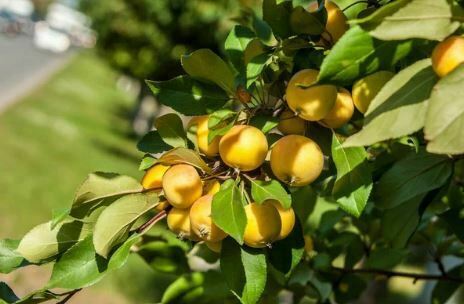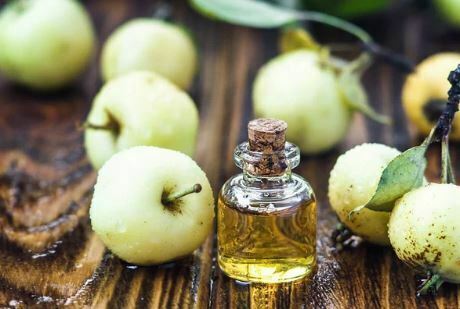Wild apple is an apple variety that grows naturally and spontaneously on mountain slopes and rural areas. Wild apple is a medium 3 cm diameter, white flesh, fragrant and aromatic, yellow or red colored.

In general, apples belonging to the genus Malus communis L. from the Rosaceae family; consist of 85% water, 11% carbohydrates, 2% dietary fiber, 0.6% fat, 0.5% organic acids, 0.3% protein and the most abundant acid in its compound is malic acid and it is also very rich in phenolic acids and vitamins.
Apple is one of the fruits known since ancient times, consumed in different forms and large quantities. It is known that the apple is praised in historical inscriptions due to some of its therapeutic properties.
Malus sylvestris Miller, known as the wild apple, is one of the lesser known but important varieties of apple with many cultivars grown or wild.
This type of apple is known as “the European crab apple” in Europe. Wild apple is also known as “mountain apple” or “forest apple“.

The wild apple tree looks more like a shrub than a tree. It can live up to 80-100 years and can grow up to 10 meters with trunk diameters of 23-45 centimeters.
Due to their poor competitiveness and high light requirement, wild apples are mostly grow on the wet edges of forests and the edges of farmland.
Wild apple is a fruit originating from Central Asia and it is known that different types are grow in Europe, America and Anatolia.
Although wild apples are found more or less in every region of Turkiye, the places where they are most concentrated are the Bayburt, Kastomunu and Erzurum regions.
It is widely preferred in its immediate surroundings and is usually consumed with tea. In this region, wild apples are used not only in season but also frozen or as pickles in other seasons.
Although it is not described as an economical fruit, it is easily found and sold in markets and markets in these regions.
Generally, its very strong aroma is used by adding wild apple to tea instead of lemon,and it is evaluated as a preventive measure against diseases in the East Anatolia. In addition, it is used in salads or it is processed into products such as apple juice, apple tea, apple cider vinegar, apple cider, apple molasses and apple compote.
The wild apple is also known as the ancestor of cultivated apples. Although this apple variety is not an economical product, it is consumed in different ways and for different purposes in the regions where it grows.
Generally, just the fruits of wild apples are consumed. However, when it is used as a flavoring as in tea, its seeds are also used. In addition, seeds are used to give color when turned into jam or similar products.
Composition and Health Benefits of Wild Apple
As reported by Afyonkarahisar Medical and Aromatic Plants Center (An Institution of Republic of Turkiye), wild apple has carbohydrate (12.6%), protein (0.3%), water (84.3%), fiber (2.5%) and lipid (%0,3). It also contains vitamin C, E, B1, B2, PP, B5, B9 and provitamin A (Carotene) and oligo-elements such as potassium (K), magnesium (Mg), phosphorus (P), calcium (Ca), zinc (Zn), iron (Fe) and manganese (Mn).
According to some studies, the glucose amount of wild apples has been determined as 46 mg/L.
It also contains phytochemicals that reduce the risk of lipid oxidation, immune system damage and diseases such as asthma and diabetes.
Recent studies have reported that apples have valuable antioxidant compounds that reduce the risk of prostate and lung cancer, cardiovascular diseases, chronic diseases and reduce DNA damage.
From this point of view, wild sour apple is thought to be beneficial in cleansing the kidneys, treating headaches, lowering cholesterol and high blood pressure, controlling blood glucose level, treating rheumatism, gout and insomnia, shedding parasites in the intestines, eliminating fatigue and constipation.

People who consume it heavily often state that this fruit is good for insomnia and diabetes. They also state that in some places, people with high blood pressure or fever are fed from this apple or tea is made and drunk.
It has been reported that this fruit has been consumed in this way for many years and it is tried to be consumed more in order not to get sick, especially in winter.
Here are some articles that might interest you;
Black Rosehip (Rosa pimpinellifolia L.); Overview and Benefits
Barberries (Berberis vulgaris); Overview and Health Benefits
Be First to Comment